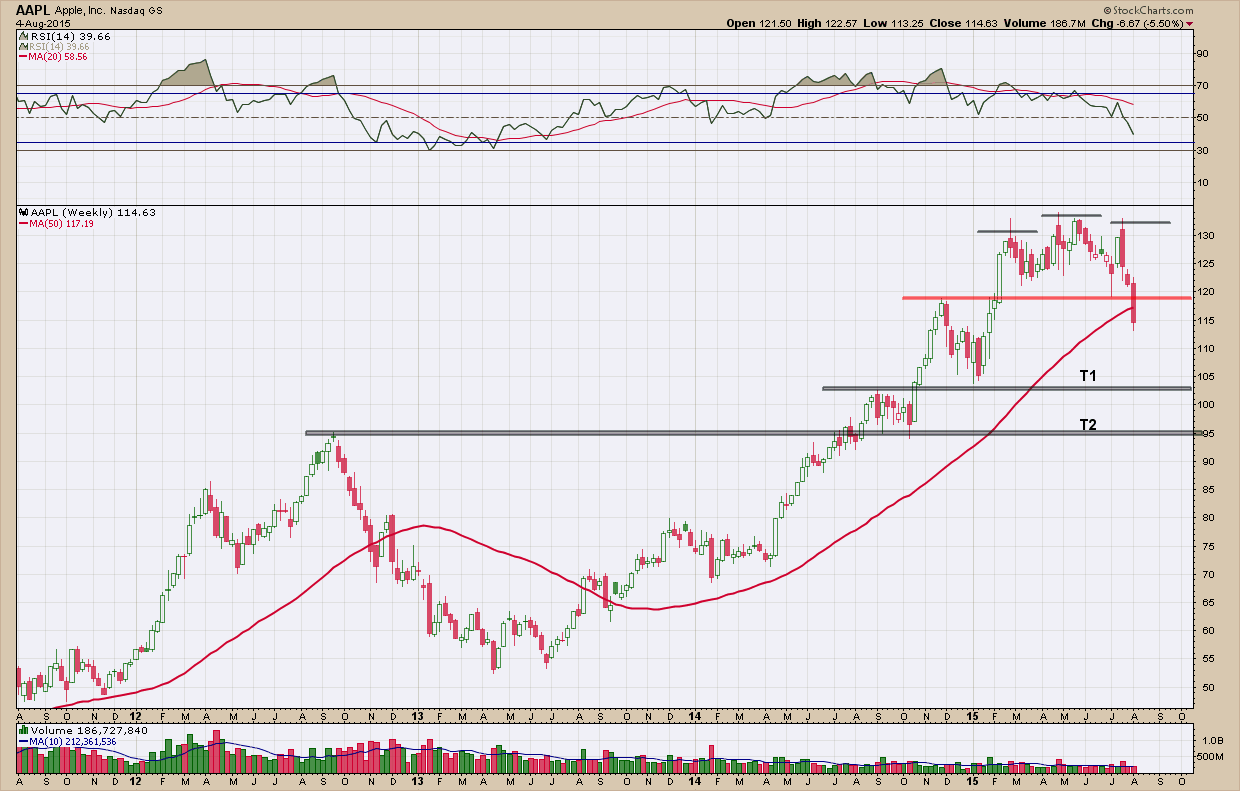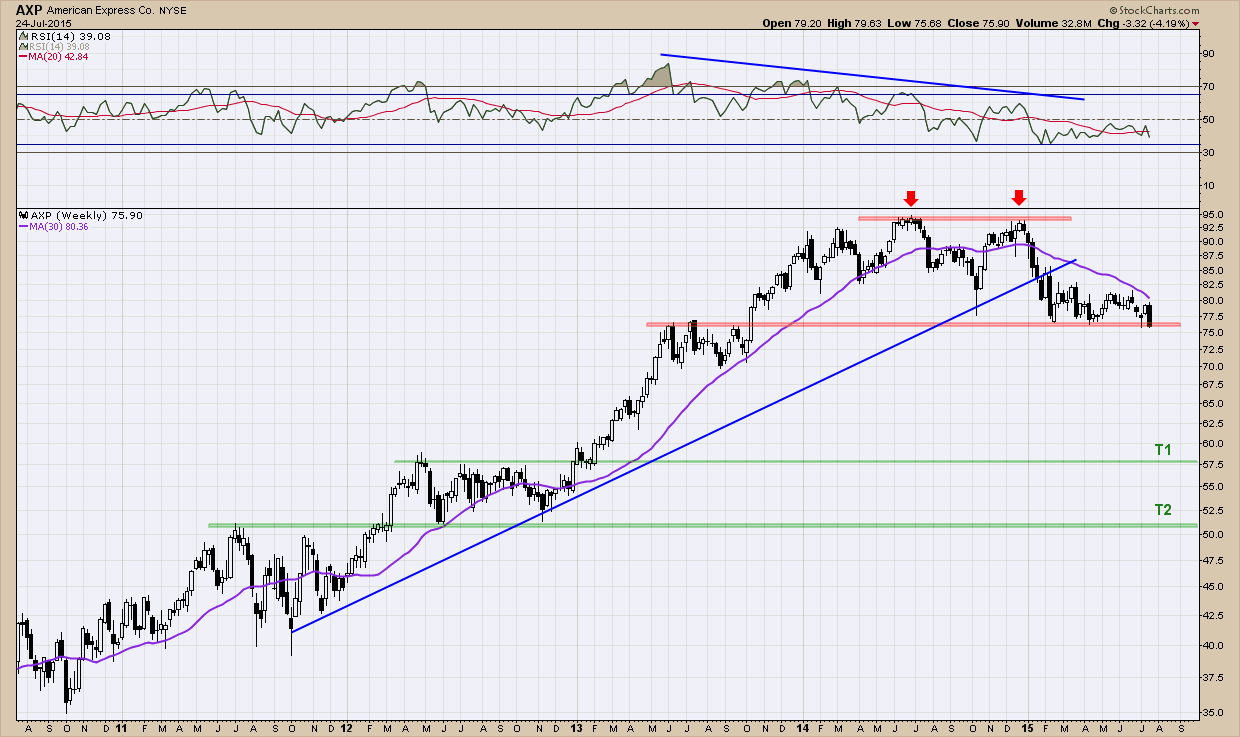I have mentioned many times in the past about the problems with diversification in the current investing environment. We all have likely read the studies and have been preached to by Wall Street on its value and importance. Unfortunately, for the past 5+ years, a diversified portfolio of stock holding has substantially underperformed one concentrated here at home. Most Asian stock markets, like Europe’s have lagged their US brethren by more than 60% since 2010. So it makes for a tough argument to hold on to them in one’s portfolio even if they are in an uptrend.
Taking a look at our ETF proxy, AAXJ, for the Asian (excluding Japan) stock markets it appears as if there may be bigger troubles ahead beyond underperformance. In the upper pane you can see we created bearish momentum divergence at the most recent high warning of a potential reversal ahead. In the middle pane of price, we have been in a nice upward channel since 2011 until 3 weeks ago when price broke below the lower blue up-trend line. More importantly, this week we closed below the major black horizontal support line that has been tested many times from above and below (testing marked by red arrows) confirming its significance as it now flipped from support to resistance. If in the next couple of weeks we cannot retake this line, further downside to the $52-$54 range is likely.
If we were invested in this (thank goodness we are not), our model would have triggered a sell signal weeks ago telling us to step aside. As with all corrections/retracements after a new high has been created the reaction bounce from the subsequent low will tell us if a new down trend has be begun. Either way and until we see a change in direction of its performance relative to the SP500 (see bottom pane of chart), I see no reason to own it.
As an aside, I continue to scour and monitor world markets and am finding fewer and fewer investment opportunities with good risk to reward ratio’s regardless of whether they are stocks, bonds or (especially) commodities. Cash is looking more attractive every day.






